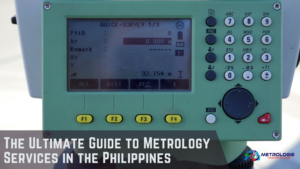In today’s competitive market, customer satisfaction is more than just a buzzword. It is the foundation upon which businesses thrive, especially in industries reliant on temperature-sensitive processes such as food, pharmaceuticals, cosmetics, and logistics. For Filipino businesses facing unique climatic and operational challenges, thermal mapping has become a critical tool in ensuring product integrity and operational efficiency. By integrating thermal mapping into their operations, companies can not only comply with regulations but also significantly improve customer trust and loyalty.
This comprehensive guide explores how thermal mapping can directly impact customer satisfaction. It delves into its importance, implementation strategies, industry applications, and how Filipino businesses can adopt best practices tailored to the local environment.
Understanding Thermal Mapping
Thermal mapping involves the systematic recording and analysis of temperature variations within specific spaces, such as storage facilities, transport vehicles, or production lines. The process identifies hot and cold spots and ensures that temperature-sensitive products remain within their ideal temperature ranges.
For Filipino businesses, where tropical climates can pose additional challenges, thermal mapping ensures that products maintain their quality and safety from manufacturing to delivery. It also plays a critical role in meeting both local and international standards for temperature-controlled goods.
How Thermal Mapping Impacts Customer Satisfaction
Customer satisfaction hinges on reliability, transparency, and quality. Thermal mapping directly supports these factors by:
- Ensuring Consistent Quality: Proper temperature control prevents spoilage and degradation, ensuring that customers receive products in their optimal condition.
- Building Trust: Businesses that use thermal mapping demonstrate a commitment to maintaining high standards, boosting customer confidence.
- Reducing Returns and Complaints: By minimizing temperature-related issues, companies can significantly lower the risk of customer dissatisfaction.
- Enhancing Operational Efficiency: Thermal mapping helps identify inefficiencies in cooling or storage systems, enabling businesses to optimize their operations and pass cost savings on to customers.
Industries Benefiting from Thermal Mapping in the Philippines
Thermal mapping plays a crucial role across various sectors, each benefiting uniquely from its implementation:
Food and Beverage
Maintaining the freshness and safety of perishable goods is critical in the food and beverage industry. Thermal mapping ensures compliance with food safety standards and prolongs the shelf life of products. Filipino businesses exporting local delicacies or catering to domestic markets rely on this process to meet stringent safety requirements.
Pharmaceuticals
With the rise in demand for temperature-sensitive vaccines and medications, the pharmaceutical industry depends heavily on thermal mapping to ensure drug efficacy. This process helps Filipino companies comply with global standards such as the World Health Organization (WHO) and Food and Drug Administration (FDA).
Cosmetics and Personal Care
Cosmetic products often contain ingredients that degrade when exposed to high temperatures. Thermal mapping ensures that these products maintain their quality, building trust with consumers who expect reliable results.
Logistics and Cold Chain
In a country like the Philippines, where logistical challenges are common, thermal mapping enhances the reliability of cold-chain transport. Businesses can ensure temperature stability during long hauls, reducing the risk of spoiled or damaged goods.
Key Components of Effective Thermal Mapping
To achieve the best results, businesses must ensure that their thermal mapping processes are well-planned and executed. Key components include:
Data Loggers and Sensors
Investing in high-quality temperature monitoring devices is crucial. Data loggers record accurate temperature readings over time, providing insights into fluctuations and trends.
Calibration and Validation
Regular calibration of monitoring equipment ensures accuracy. Validation reports provide proof of compliance with temperature control standards, which can be shared with customers and regulatory authorities.
Comprehensive Risk Assessment
Assessing the risks associated with temperature variations allows businesses to take proactive measures, such as adjusting storage layouts or upgrading cooling systems.
Periodic Monitoring
Regular thermal mapping helps businesses adapt to changes in environmental conditions or operational demands. Seasonal variations, for example, can impact temperature control strategies.
Training and Expertise
Staff training ensures that employees understand the importance of thermal mapping and can effectively implement the process. Partnering with experienced thermal mapping providers can also bring added expertise.
Best Practices for Implementing Thermal Mapping
For Filipino businesses looking to enhance customer satisfaction through thermal mapping, adhering to best practices is essential:
Conduct Regular Audits
Routine audits help identify temperature inconsistencies and optimize storage or transport systems. Audits should be scheduled periodically and during peak operational periods to capture worst-case scenarios.
Optimize Storage Layouts
Properly organizing storage areas minimizes temperature fluctuations. For example, avoiding overcrowding allows for better airflow, while using barriers can isolate high-risk zones.
Leverage Technology
Modern thermal mapping systems incorporate IoT-enabled sensors, real-time monitoring, and data analytics. These tools provide actionable insights and enable proactive management of temperature deviations.
Focus on Sustainability
Adopting energy-efficient cooling systems and renewable energy sources not only reduces operational costs but also aligns with eco-conscious customer values.
Collaborate with Experts
Partnering with professional thermal mapping providers ensures that the process is thorough and meets industry standards. Experts can offer tailored solutions for specific business needs.
Case Studies: Success Stories from Filipino Businesses
Food Exporter Ensuring Freshness
A leading exporter of Philippine mangoes faced challenges in maintaining product freshness during transit. By implementing thermal mapping, the company identified critical hot spots in their cooling systems. Upgrades based on these insights led to a 20% reduction in spoilage and increased customer satisfaction among international buyers.
Pharmaceutical Distributor Meeting Compliance
A distributor of temperature-sensitive vaccines struggled to meet WHO standards. Thermal mapping allowed them to validate their cold-chain systems and address inefficiencies. As a result, they achieved compliance and strengthened partnerships with healthcare providers.
E-Commerce Retailer Reducing Returns
A local e-commerce platform experienced high return rates for perishable goods. After incorporating real-time thermal mapping, the company optimized its delivery processes and reduced returns by 30%, significantly improving customer trust.
The Future of Thermal Mapping in the Philippines
Thermal mapping is evolving rapidly, with emerging trends set to further enhance its impact on customer satisfaction:
Integration with Smart Systems
IoT-enabled devices and AI-driven analytics are transforming thermal mapping, providing businesses with real-time data and predictive insights.
Blockchain for Transparency
Blockchain technology creates tamper-proof records of temperature data, enhancing supply chain transparency and building customer trust.
Focus on Small Businesses
Affordable and scalable thermal mapping solutions are making the technology accessible to small and medium-sized enterprises (SMEs) in the Philippines.
Sustainability Initiatives
With increasing awareness of environmental issues, businesses are adopting green practices in temperature control, aligning with consumer values.
Conclusion
Thermal mapping is a vital tool for Filipino businesses aiming to enhance customer satisfaction. By ensuring product quality, optimizing operations, and building trust, it provides a competitive edge in today’s market. Businesses that embrace thermal mapping and adhere to best practices will not only meet regulatory standards but also foster lasting relationships with their customers. As technology and innovation continue to evolve, the role of thermal mapping in driving customer satisfaction will only grow more significant.




